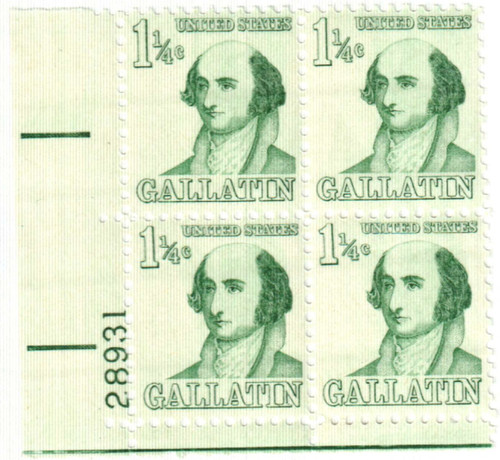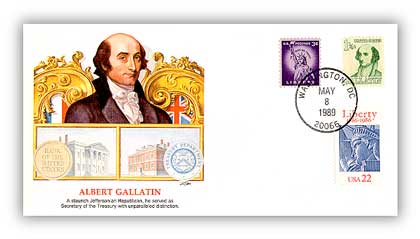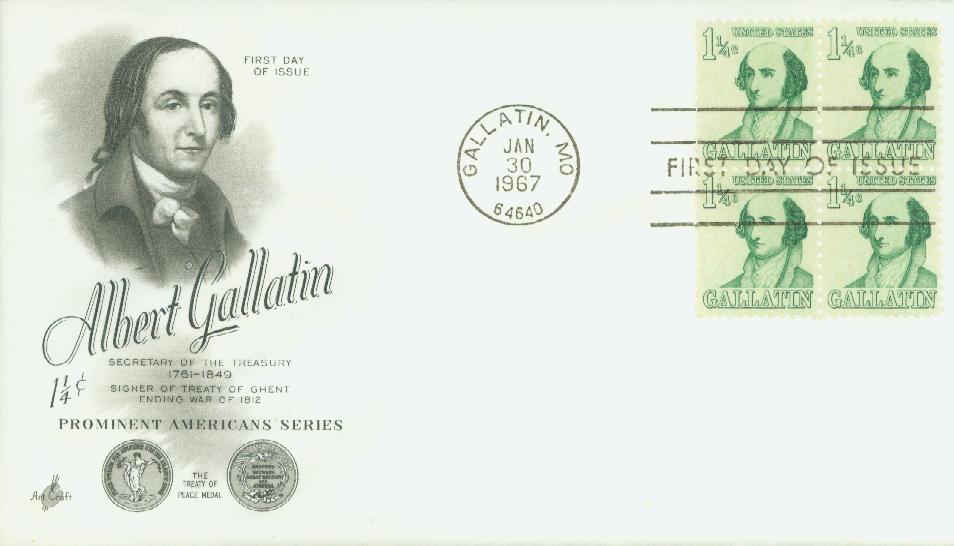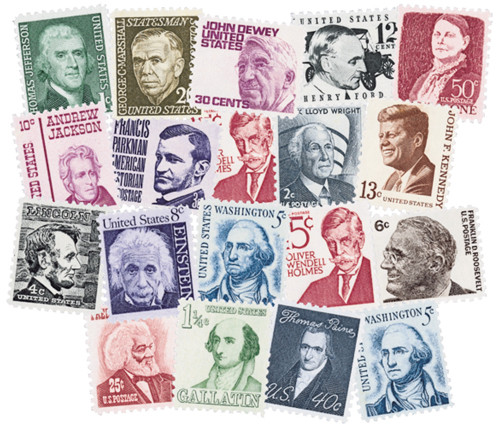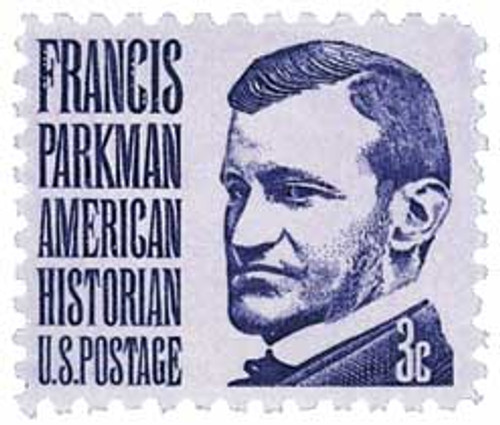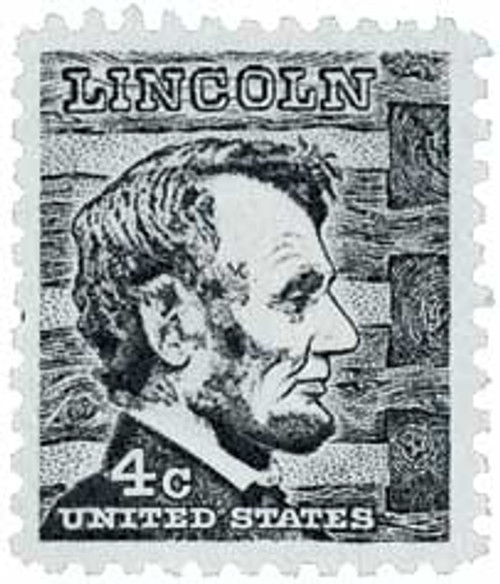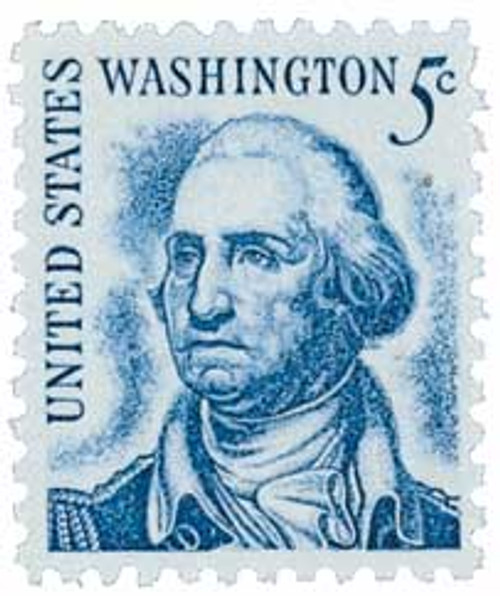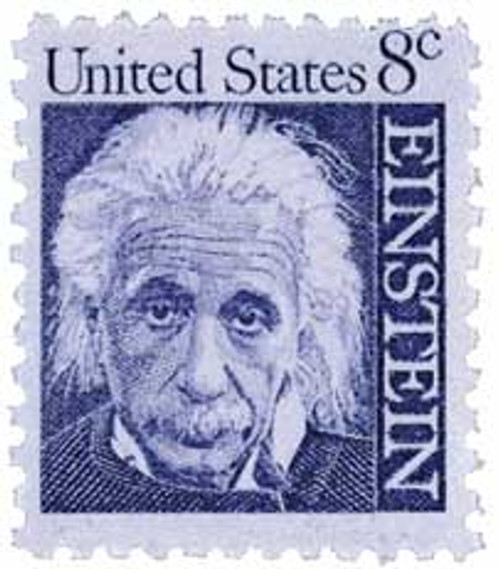
# 1279 PB - 1967 1 1/4c Prominent Americans: Albert Gallatin
1 1/4¢ Albert Gallatin
Prominent Americans Series
City: Gallatin, MO
Printing Method: Rotary Press
Color: Light green
Birth Of Albert Gallatin
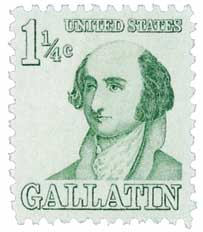
Politician and diplomat Abraham Alfonse Albert Gallatin was born on January 29, 1761, in Geneva, Switzerland. Gallatin’s aristocratic family included physicians, statesmen, and soldiers – one of his relatives commanded a battalion at the Battle of Yorktown.Â
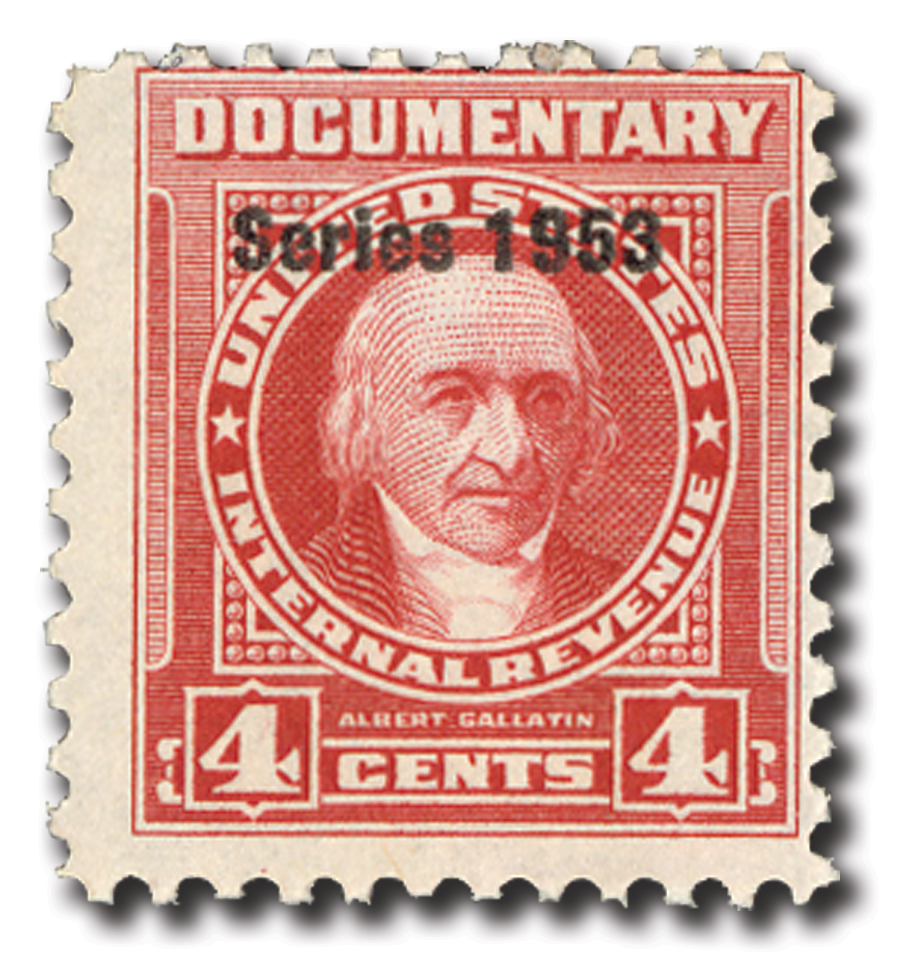
After graduating at the top of his class from the Academy of Geneva, Gallatin and a friend secretly set sail for the US in May 1779. Throughout his time in America, Gallatin took part in several business ventures, including the production and sale of glassworks and muskets. He also taught French at Harvard University.
Gallatin began his political career in 1789 as a member of the Pennsylvania state constitutional convention. The following year he was elected to the Pennsylvania General Assembly. In 1793, he was elected to the US Senate. He was removed shortly after due to protests that he’d not been a US citizen for at least nine years, as is required by law to hold that position.
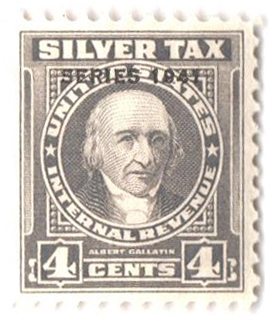
Despite the publicized controversy, Gallatin was elected to the House of Representatives in 1795, later becoming the majority leader. As a leader of the New Democratic-Republican Party, he was the primary spokesman on financial matters and was a founding member of the House Committee on Finance (which later became the Ways and Means Committee).Â
With Thomas Jefferson’s election to president in 1801, Gallatin began a 13-year service as US secretary of the Treasury – the longest service of any person in this position. In this role, he successfully balanced the federal budget and was largely responsible for avoiding a tax increase following the Louisiana Purchase. He also helped map out the Lewis and Clark Exposition. Gallatin was key in resolving the constitutional issues that made this unprecedented purchase quite complicated. And he managed to cut the national debt from $80 million to $45 million.
Â

After resigning from secretary of Treasury, Gallatin led the negotiations at the Treaty of Ghent (ending the War of 1812). He then served as Minister to France and then Great Britain before settling in New York City where he helped found New York University in 1831. He died in New York on August 12, 1849.
The 1 ¼¢ denomination pictures Albert Gallatin.
1 1/4¢ Albert Gallatin
Prominent Americans Series
City: Gallatin, MO
Printing Method: Rotary Press
Color: Light green
Birth Of Albert Gallatin

Politician and diplomat Abraham Alfonse Albert Gallatin was born on January 29, 1761, in Geneva, Switzerland. Gallatin’s aristocratic family included physicians, statesmen, and soldiers – one of his relatives commanded a battalion at the Battle of Yorktown.Â

After graduating at the top of his class from the Academy of Geneva, Gallatin and a friend secretly set sail for the US in May 1779. Throughout his time in America, Gallatin took part in several business ventures, including the production and sale of glassworks and muskets. He also taught French at Harvard University.
Gallatin began his political career in 1789 as a member of the Pennsylvania state constitutional convention. The following year he was elected to the Pennsylvania General Assembly. In 1793, he was elected to the US Senate. He was removed shortly after due to protests that he’d not been a US citizen for at least nine years, as is required by law to hold that position.

Despite the publicized controversy, Gallatin was elected to the House of Representatives in 1795, later becoming the majority leader. As a leader of the New Democratic-Republican Party, he was the primary spokesman on financial matters and was a founding member of the House Committee on Finance (which later became the Ways and Means Committee).Â
With Thomas Jefferson’s election to president in 1801, Gallatin began a 13-year service as US secretary of the Treasury – the longest service of any person in this position. In this role, he successfully balanced the federal budget and was largely responsible for avoiding a tax increase following the Louisiana Purchase. He also helped map out the Lewis and Clark Exposition. Gallatin was key in resolving the constitutional issues that made this unprecedented purchase quite complicated. And he managed to cut the national debt from $80 million to $45 million.
Â

After resigning from secretary of Treasury, Gallatin led the negotiations at the Treaty of Ghent (ending the War of 1812). He then served as Minister to France and then Great Britain before settling in New York City where he helped found New York University in 1831. He died in New York on August 12, 1849.
The 1 ¼¢ denomination pictures Albert Gallatin.

